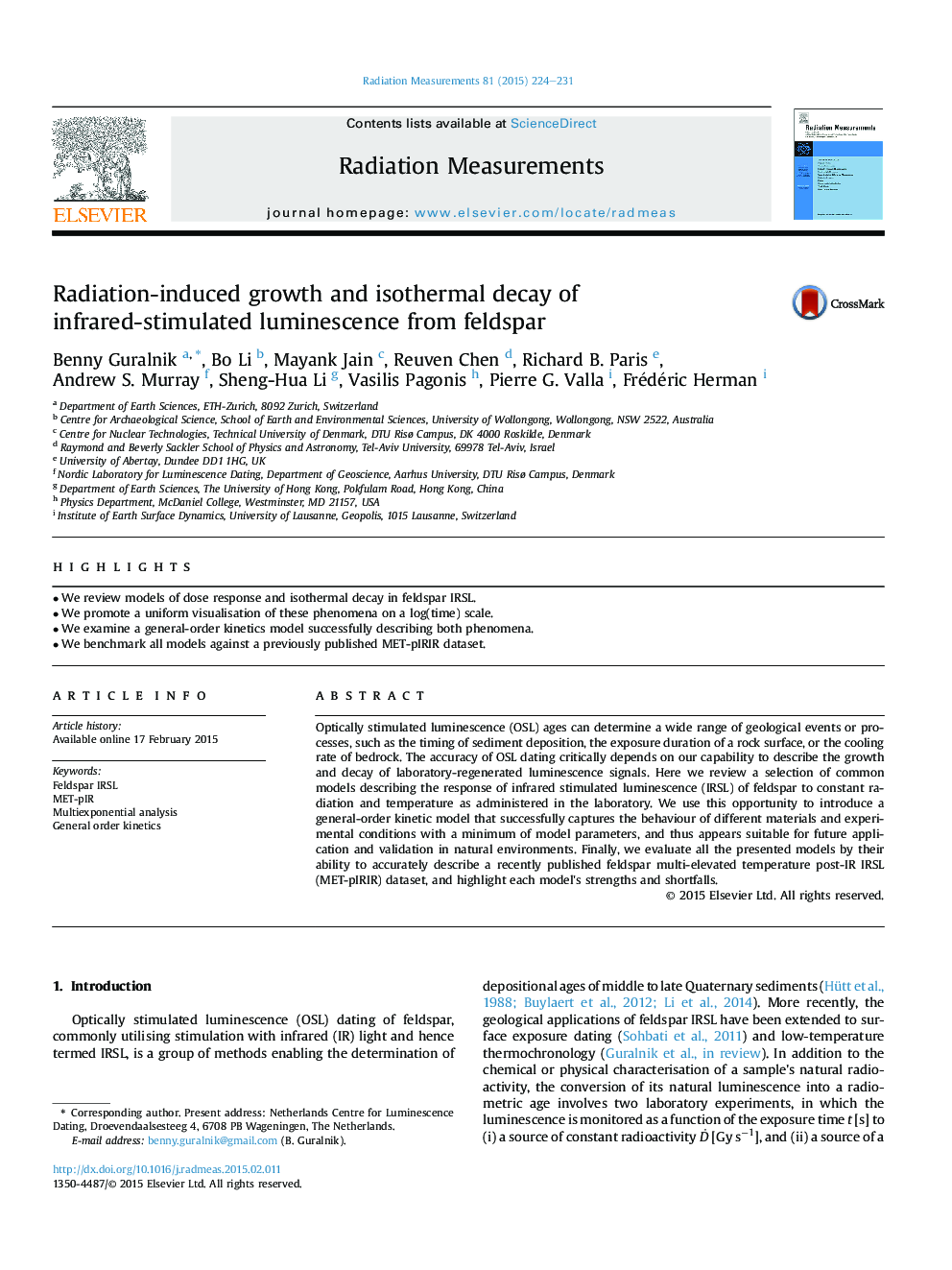| Article ID | Journal | Published Year | Pages | File Type |
|---|---|---|---|---|
| 1883279 | Radiation Measurements | 2015 | 8 Pages |
•We review models of dose response and isothermal decay in feldspar IRSL.•We promote a uniform visualisation of these phenomena on a log(time) scale.•We examine a general-order kinetics model successfully describing both phenomena.•We benchmark all models against a previously published MET-pIRIR dataset.
Optically stimulated luminescence (OSL) ages can determine a wide range of geological events or processes, such as the timing of sediment deposition, the exposure duration of a rock surface, or the cooling rate of bedrock. The accuracy of OSL dating critically depends on our capability to describe the growth and decay of laboratory-regenerated luminescence signals. Here we review a selection of common models describing the response of infrared stimulated luminescence (IRSL) of feldspar to constant radiation and temperature as administered in the laboratory. We use this opportunity to introduce a general-order kinetic model that successfully captures the behaviour of different materials and experimental conditions with a minimum of model parameters, and thus appears suitable for future application and validation in natural environments. Finally, we evaluate all the presented models by their ability to accurately describe a recently published feldspar multi-elevated temperature post-IR IRSL (MET-pIRIR) dataset, and highlight each model's strengths and shortfalls.
